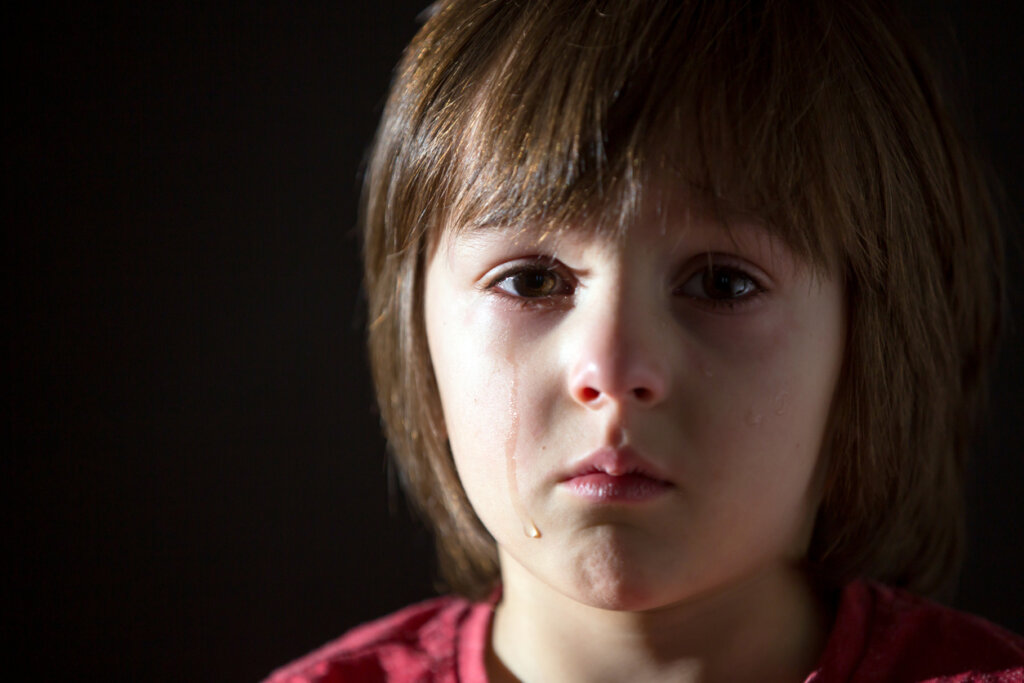When we talk about parenting, we generally focus on children’s behavior, whether it’s good or bad, desirable or undesirable, and how to improve it. Obviously, some behavior needs to be corrected and little ones need guidance and teaching. However, if we only concentrate on their actions, we’re only looking at the situation on a superficial level. In fact, children communicate with their behavior, and it’s our job to learn to listen to them.
Behind the behavior of a child is a message. It’s the reflection of their internal world, of their thoughts and emotions. It’s essential to remember that children don’t want to bother or hurt us. Indeed, there are no bad intentions behind their behavior.
Therefore, if your children have certain attitudes you’d like to change, you must start by understanding where they’re coming from.
Children communicate with their behavior
Communication between parents and children is fundamental for their correct emotional development. This must be forged from birth. Indeed, the parent’s ability to perceive and understand their baby’s needs and their willingness to respond to their demands establishes the attachment bond.
If a newborn cries, it’s because they feel hungry, cold, sleepy, or uncomfortable, or because they seek contact and affection from their caregivers. In fact, crying is their only way of expression and, as a parent, you strive to understand what they need and act accordingly. Nevertheless, as your children get older, you lose that sensitivity.
If your two-year-old has a tantrum, you assume that they’re challenging you and that they’re behaving badly. If your child hits their sibling or refuses to sleep alone, you’re quick to reproach them for misbehaving. You see it as a deliberate attempt to misbehave or annoy you.
However, you’re not understanding that your child still doesn’t have the necessary tools to manage and express themselves. After all, children aren’t miniature adults and perhaps these behaviors are the only means they have to communicate what they need.
What messages are behind children’s misbehavior?
Children’s behaviors can communicate different messages. In each individual case, the situation must be analyzed, and the child must be observed carefully in order to uncover those messages. Here are some examples to serve as a guide for your own circumstances:
An emotional intensity that they’re unable to manage
A child’s tantrum may only be the consequence of the accumulation of emotional intensity. Nevertheless, due to their incomplete development, they’re unable to manage it in any other way. In fact, a child’s ability to self-regulate is poor. Consequently, some negative emotions (such as anger, sadness, or frustration) can overcome them.
At this evolutionary stage, infants seek to reaffirm themselves, assert their opinions, and oppose, to a certain degree, the directives of others. Therefore, when they’re forced to do something they don’t want to do or they’re denied something they want, they can become overly aroused and throw a tantrum.
If you only look at their behavior, you might react with anger, feel challenged, and try to impose yourself on them to make them behave. On the other hand, if you listen to their message, you’ll see that they don’t need reprimanding, but to be helped to regulate their emotional state.
Jealousy and insecurity
Say that your child has got into the habit of hitting or yelling at their younger sibling every time they play together. At first glance, this might seem like a behavior problem. Therefore, the solution seems clear: you have to teach them not to attack others. However, you must delve deeper and get to the root of the problem and find out why they’re behaving like this.
Maybe, since the birth of their sibling, they’ve felt displaced or neglected by you. This could be because they were sent to sleep in their own room right after their sibling was born. Or, maybe you compare both of them and tend to prioritize your younger child.
These small gestures might go unnoticed by you. However, they can have a significant impact on your child and lead them to act inappropriately. By understanding what they feel and attending to their emotional needs, you’ll be closer to eliminating their bad behavior and, above all, their discomfort.
Anxiety
Imagine that your child has started to bite their nails. You might decide to cut their nails, apply nail polish with a bad taste, or simply scold them when you see them doing it.
These kinds of actions are usually signs of anxiety, worry, and nervousness. Maybe your child is overwhelmed by an overly busy schedule, reacting to too much fighting between you and your partner, or upset by a conflict with their classmates.
You need to discover what the reasons are for their behavior and find a solution. Otherwise, you’ll simply be covering up the symptom, but leaving aside the underlying cause.

Children communicate with their behavior when they have no more resources
Discovering the messages contained in children’s behavior is essential. It’s also important to offer them other types of tools to express and manage themselves.
Emotional education helps children understand what they feel, how to express it in appropriate ways, and how to regulate their moods without having to resort to ‘bad behaviors’.
Obviously, little ones won’t find it particularly easy to do. Therefore, as parents, you must make the process easier for them. As they grow older, if they’ve been properly listened to, they’ll be better able to channel their emotions properly. Therein lies the importance of respectful parenting.
The post Children Communicate With Their Behavior: Learn to Listen to Them appeared first on Exploring your mind.



















Comments